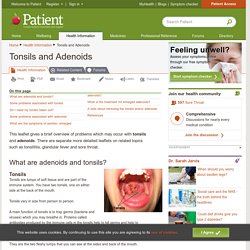

Animal Systems: Immune System. Diseases are everywhere.

You may have heard about tuberculosis, SARS, AIDS, malaria, or something as simple as the flu. All of those diseases can kill you. They would definitely kill you if you did not have an immune system. Your immune system is your microscopic armor that protects the cells of your body from bacteria, viruses, and poisons you might encounter every day. While other systems have major organs you can dissect and remove from the body, your immune system is relatively invisible and made of many different types of immune cells.
You know when your immune system is at work because of the symptoms you might have. The immune system is like a small police force that constantly patrols every organ and tissue in your body. Definition of leukocyte by Medical dictionary. Leukocyte [loo´ko-sīt] a type of bloodcellthatlackshemoglobinand is thereforecolorless.Leukocytesarelarger in sizeandfewer in numberthanerythrocytes; normallythebloodhasabout8000 of themper mm3.

In contrast to erythrocytes,leukocytescanmoveaboutundertheirownpowerwithameboid movement. Theirchieffunctionsare to act as scavengersand to helpfightinfections.Calledalsowhitecell or corpuscleandwhitebloodcell or corpuscle.adj. ,adjleukocyt´ic. Leukocytes may be classified in two main groups: the granular leukocytes are the basophils, eosinophils, and neutrophils, and the nongranular leukocytes are the lymphocytes and monocytes. Leukocytes are actively engaged in the destruction or neutralization of invading microorganisms and are quickly transported to the vicinity of infection or inflammation, so that they can move through the blood vessel wall to reach the site of injury.
Types of leukocytes. agranular l's nongranular leukocyte. leu·ko·cyte (lū'kō-sīt), [leuko- + G. kytos, cell] also leucocyte. Bone Marrow and the Immune System. What is bone marrow?

Bone marrow is the spongy tissue inside our bones. All bones in newborn babies have active marrow, which means they are producing new marrow cells. By the time your child reaches young adulthood, the marrow inside the bones of the hands, feet, arms, and legs stop producing new marrow cells. In adults, active marrow is found inside the spine, hip and shoulder bones, ribs, breastbone, and skull. However, bone marrow found in the spine and hip has the richest source of bone marrow cells. What does the marrow do? Our bone marrow produces blood cells, called red blood cells, platelets, and white blood cells.
Inside the marrow, blood cells start off as young, immature cells called stem cells. Red blood cells These cells are red because they are filled with a protein called haemoglobin. Platelets Platelets are blood cells that help the blood coagulate (stick together) to help stop bleeding at sites on the body that have been cut or injured. White blood cells. Through the Microscope. (11111 Reads) Table of Contents| Chapter Article List| Printable Version | Printable Chapter.

Adenoids and Tonsils. What are adenoids and tonsils? This leaflet gives a brief overview of problems which may occur with tonsils and adenoids.

There are separate more detailed leaflets on related topics such as tonsillitis, glandular fever and sore throat. Tonsils Tonsils are lumps of soft tissue and are part of the immune system. You have two tonsils, one on either side at the back of the mouth. Tonsils vary in size from person to person. A main function of tonsils is to trap germs (bacteria and viruses) which you may breathe in. You can normally see your tonsils by opening your mouth wide and looking in a mirror. Adenoids Adenoids are made of similar tissue and are part of the immune system. Adenoids get bigger after you are born but usually stop growing between the ages of 3 and 7 years. You cannot see your adenoids.
Like tonsils, adenoids help to defend the body from infection. Although tonsils and adenoids may help to prevent infection, they are not considered to be very important. Tonsillitis. Immune System. The immune system, which is made up of special cells, proteins, tissues, and organs, defends people against germs and microorganisms every day.

In most cases, the immune system does a great job of keeping people healthy and preventing infections. But sometimes problems with the immune system can lead to illness and infection. About the Immune System The immune system is the body's defense against infectious organisms and other invaders. Through a series of steps called the immune response, the immune system attacks organisms and substances that invade body systems and cause disease.